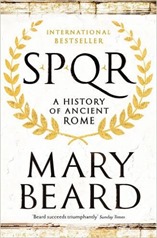
The following 200 odd years, detailing the period of the ‘Principate’ emperors, feels much more rushed and thematic. The first part of SPQR, covering the foundation and growth of the Republic through to its subsequent transformation under Augustus in the latter part of the 1st century BC, is episodic but essentially follows a linear narrative. However, I was gifted this book and so once I started, I needed to finish! That applies here (Marius and the Cimbrian War hardly get a mention for instance). I get frustrated that the author is, necessarily, constrained and so has to arbitrarily choose what to include and what to leave out. If you want that, then specialist books are what you need and that’s what I usually prefer. There’s no in depth analysis of each event. The problem with any book spanning a thousand years of history is that - no matter how large - it can only give a surface presentation of the narrative as it moves along.


As we all know, the Western Roman Empire continued for another 250 years whereas the Eastern Roman Empire - popularly now known as the Byzantium Empire - lasted for a further 1200 years until its eventual fall in 1453.

Or, as Mary Beard writes, Rome’s first millennium. SPQR ( Senatus PopulusQue Romanus meaning, for the Senate and People of Rome, the indelible banner stamped below the eagle standards of the Roman legions) is a chunky book that traces Rome from its beginnings as a bandit village in the 750’s BC through to the grant of universal citizenship across the empire by Caracalla in 212 AD.


 0 kommentar(er)
0 kommentar(er)
